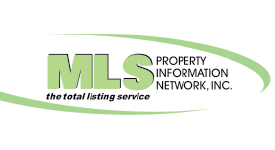Working From Home? Interior Design, With Taxes in Mind

The sky's the limit for cloud-based documents and files. Remote working is on the rise. The ranks of independent entrepreneurs are growing. For many, home is a place to live and work.
Here are three elements to consider for your work-from-home space.
1. Choose Your Workspace
Pick a bright spot. Daylight inspires!
Will you be having clients drop in? Aim to choose a spot near an entrance way, apart from your intimate living spaces.
For tax purposes, this spot can be a dedicated room, or a section of a room—as long as there's a clear division between your working and living space. Other storage areas in the home, or partitioned-off space that's fully dedicated to keeping business items, is also square footage to count in the deduction.
Take pictures each year that clearly show the partitions and the business use of the space. Keep your photos with your tax documents.
2. Furnish the Space
Decorate mainly as you would if your work space were in a corporate building. Keep your desk, professional items, and office-appropriate décor in the space. Don't have a playpen (unless your business is daycare) or a dining table in your designated office space.
Bookcases, wall hangings, mirrors, and framed art all look good, and dampen noise from outside your work space. Succulents or crocus bulbs can make excellent office plants and uplift the mood of your work area.
Protect your health while working at home by using an adjustable (sit-stand) desk. Does that sound too industrial for the look you demand at home? Never fear. Gorgeous, adjustable desks that complement your existing furniture do exist on the market. With a little searching, you'll find yours.
3. Declare Your Tax Deduction
Calculate your home office percentage. If your home amounts to 2,000 square feet and your office space covers 500, declare 25% as the percentage. The deduction may not exceed your year's net business profit.
For smaller home office spaces, the IRS has a simplified standard deduction. Take $5 per square foot, up to 300 square feet.
Speak with your tax pro about deducting a home business percentage from your homeowner's insurance, mortgage interest, utilities, and property taxes. Read the instructions, so you know how to plan your tax return.
Putting It All Together
For a tax deduction, your home office must serve as the core of your business affairs, or the place you do the bulk of your work. Whether you already have a home office, or are thinking of creating one, design your space so it fits the IRS tax deduction requirements—even while it uplifts your home, delights your senses, and inspires your best work.
About the Author

Cheryl Pendenza - Realtor®/Broker Associate
Bringing more than 30 years of experience to the table, Cheryl has a paralegal degree, banking background, and is a member of many professional, civic, and community organizations.
Qualified • Experienced • Skilled
"As a full-time REALTOR®, I am dedicated to providing my clients with a high level of service by building relationships, marketing, and negotiating on their behalf. As a homeowner, I realize how important homeownership is.
Cheryl brings warmth and compassion to her client relationships and referrals have become the backbone of her business. "I’m grateful for every referral and welcome the opportunity to help clients achieve their real estate goals.”
Cheryl Pendenza, Broker Associate affiliated with RE/MAX Andrew Realty Services since 1999 is a local businesswoman and formidable negotiator who can help you achieve your real estate goals. Supporting family, community and local business is important to Cheryl and she can often be found at one of the local restaurants, shops, or galleries.
